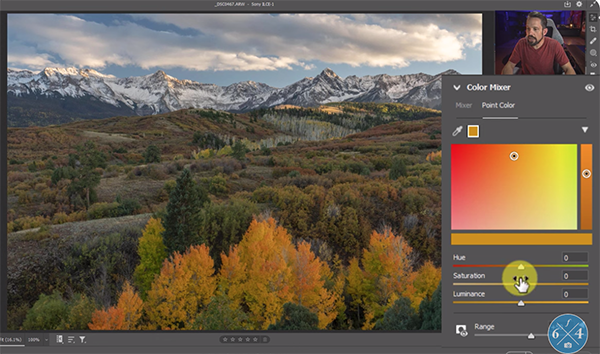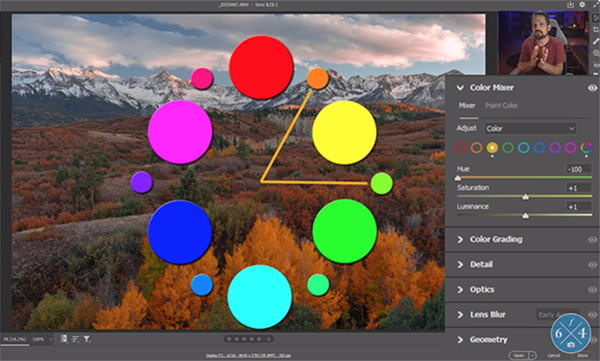Game Changer! A New Color Tool in Adobe Camera Raw (VIDEO)
If you’re wondering if there’s anything new of substance in the updated version of Adobe Camera Raw (ACR), take a listen to image-editing expert Blake Rudis who says this: “There’s an epic color theory tool that I never knew I needed, and now that I have it I’m stoked.”
Rudis is the brains behind the f/64 Academy YouTube channel, and he’s not given to hyperbole. So when he get’s so excited about a new image-editing tool it’s time to stop and pay attention. The topic of this eye-opening episode is a color range feature that Rudis says represents “next-level color theory at play.”
The enthusiasm in this 16-minute tutorial is contagious, so prepare for a WOW! moment as you learn how this game-changing feature works. In fact, if you’re like Rudis you just may want to go back to all of your images and redo everything—or at least use it for all of your edits from now on.

Rudis begins with a quick overview of the new features in ACR 16.0, while catching his breath and before revealing his favorite “amazing” new feature. He discusses a new HDR capability, a powerful feature for enhanced bokeh, changes to light and color, and a few other enhancements for improved productivity.
Once he calms down, Rudis is ready for the big reveal; namely, ACR’s new Point Color feature that he now can’t live without. As you’ll see, when compared to the old Color Mixer, this really is a big deal. He pulls up a beautiful autumn landscape photo captured last week just outside Telluride, Colorado and jumps right in.
He begins by using the Sample Point Color tool to select the yellow tones of a tree in the foreground. As you’ll see, the tones aren’t particularly bright, and accentuating colors is Rudis’ goal. He says that in the past he’d brighten up the image by using the Color Mixer and/or Exposure slider.

Now, however, “I don’t need to do that because I can control all of my colors with the new Point Color feature.” You can either do this with sliders or by clicking within a color panel above. We simply can’t match Rudis’ rabid level of enthusiasm, so we’ll skip summarizing the necessary steps and let you enjoy watching him demonstrate the power of this new tool.
Rudis provides a wide variety of image-processing tips on his popular YouTube channel, and we suggest paying a visit after watching this video to see everything else that’s available.
And be sure to check out another helpful tutorial we posted earlier with an easy way to fix converging lines in Photoshop and Adobe Camera Raw for better landscape and cityscape photos.





